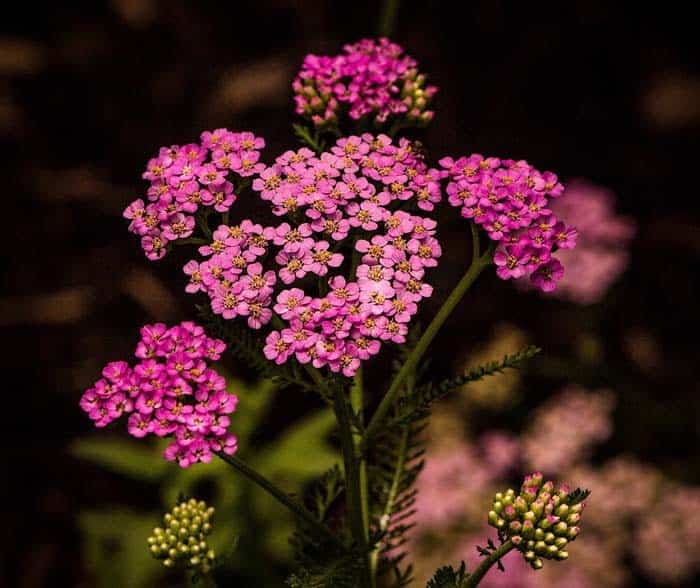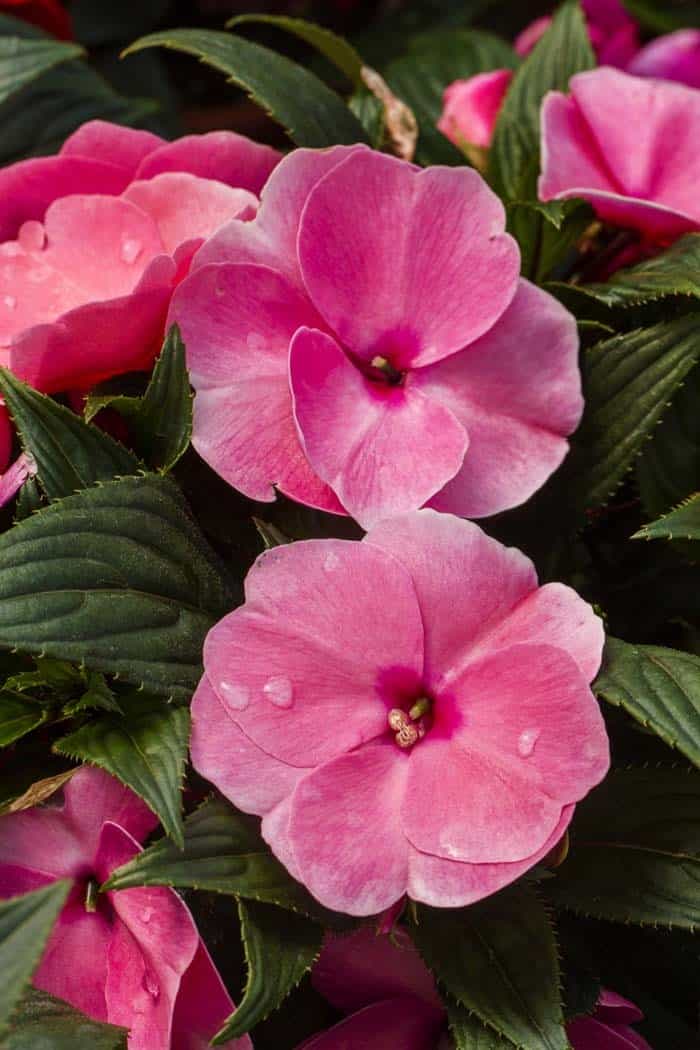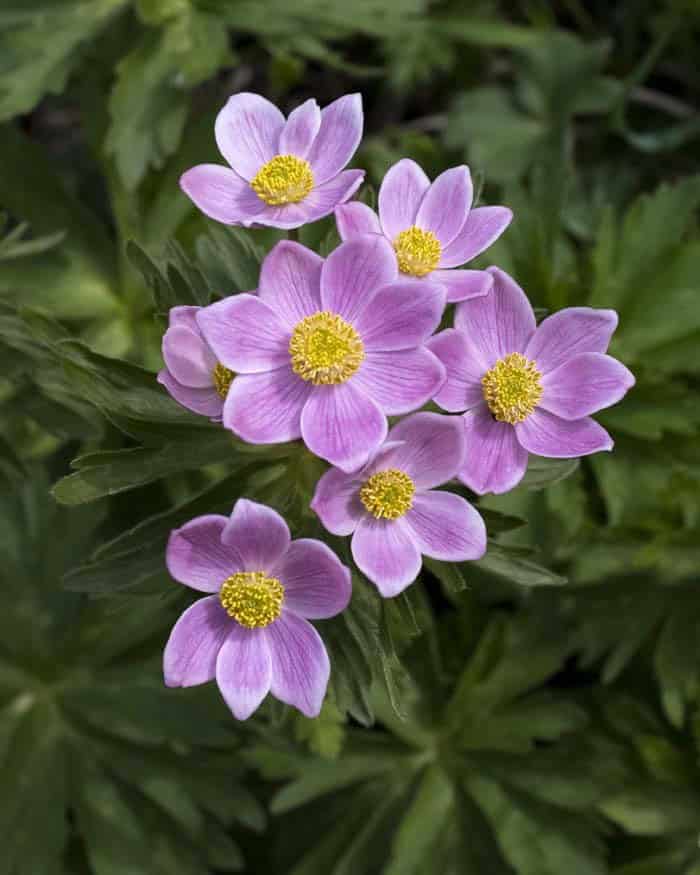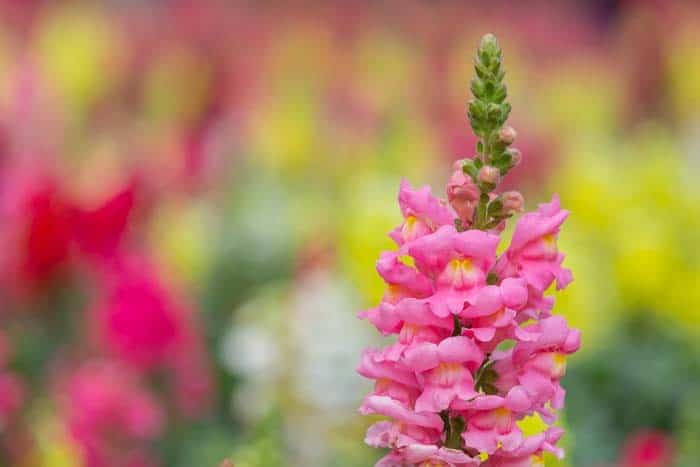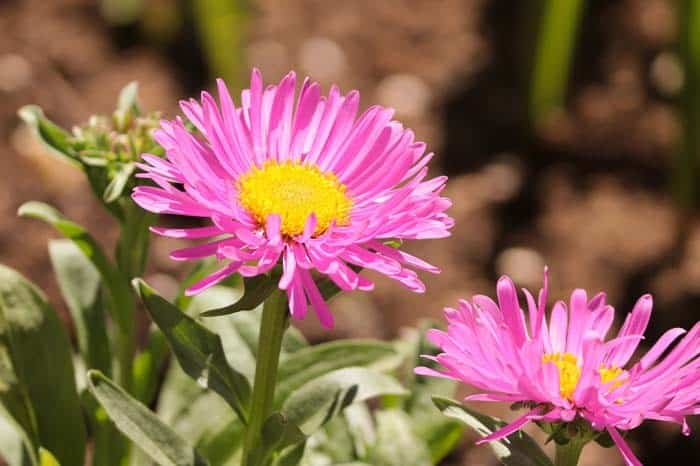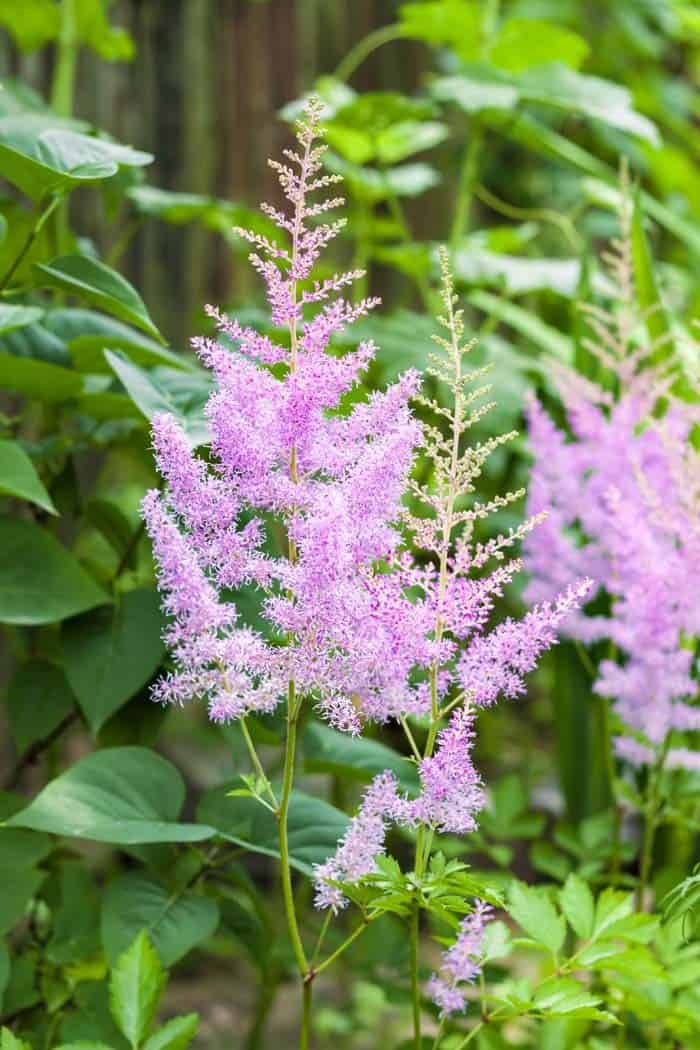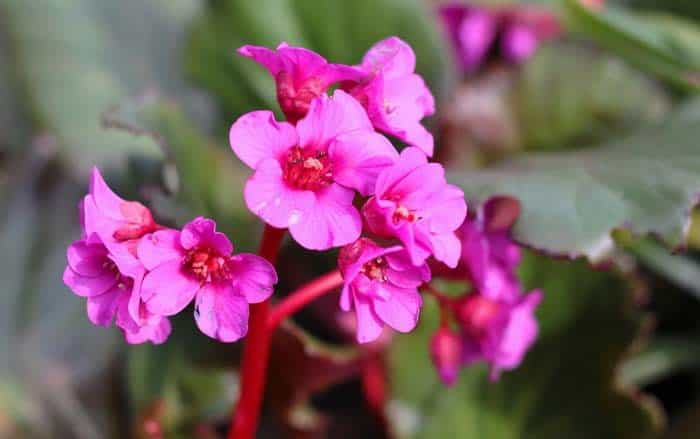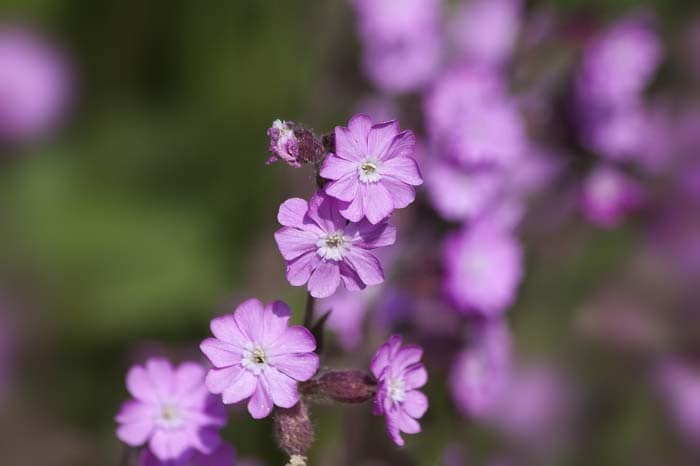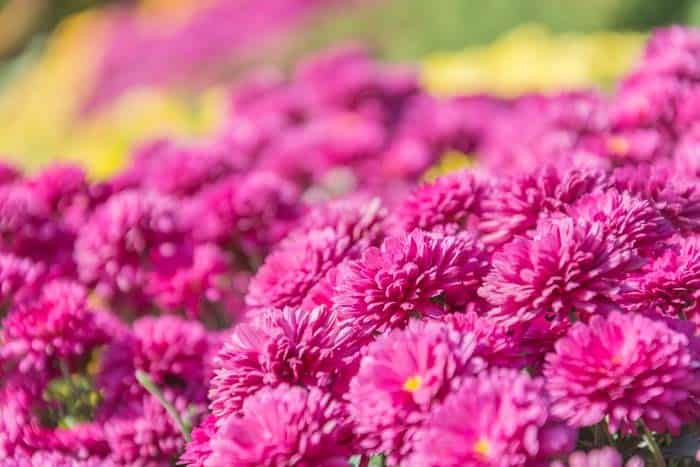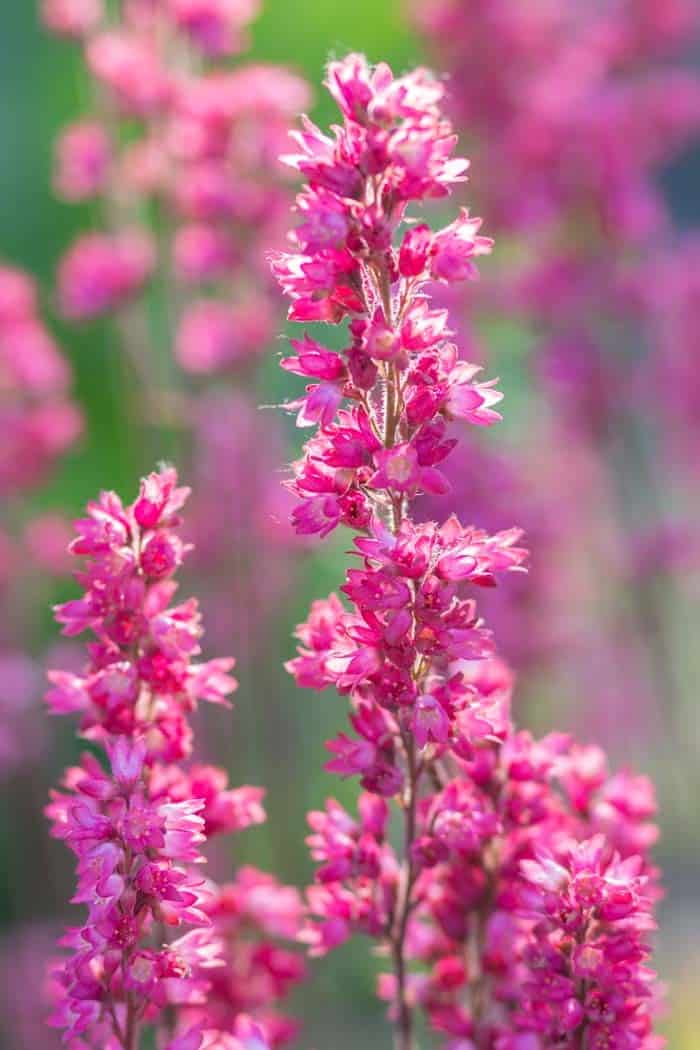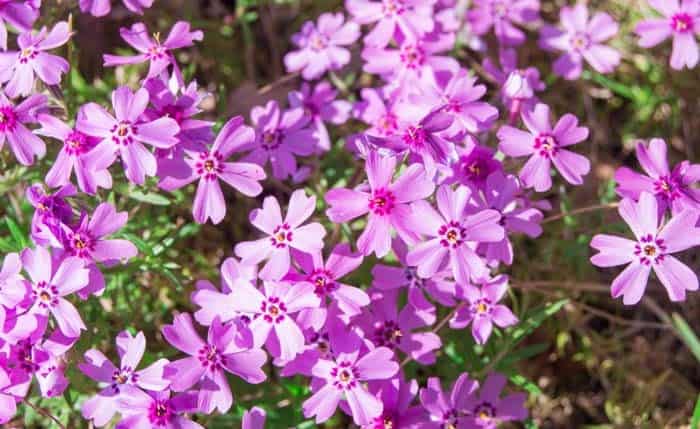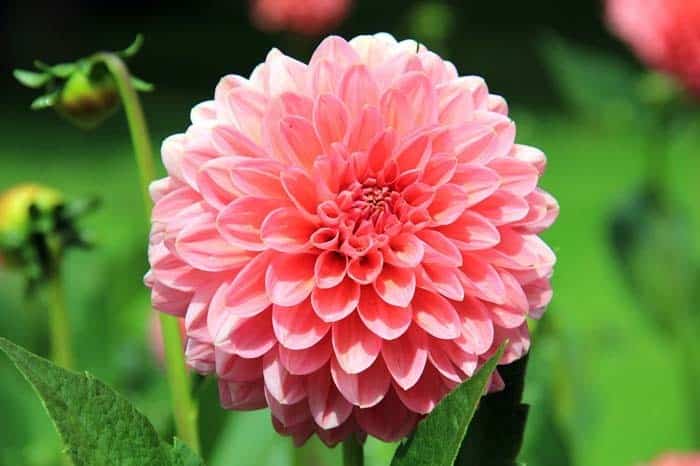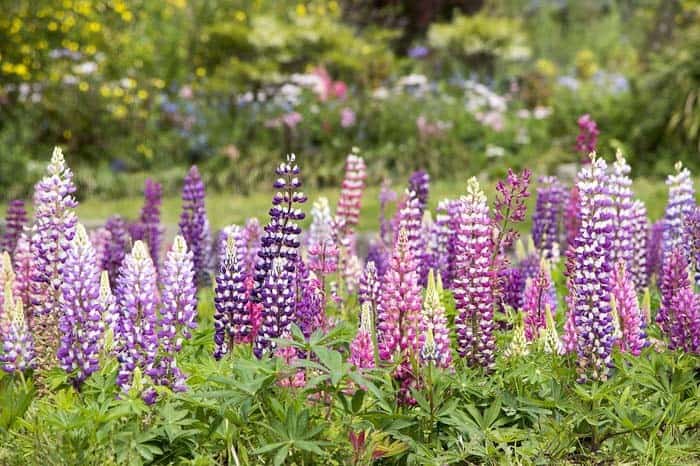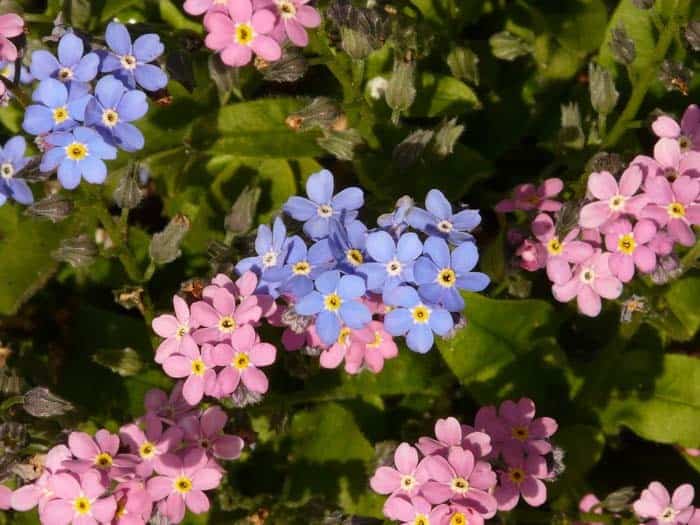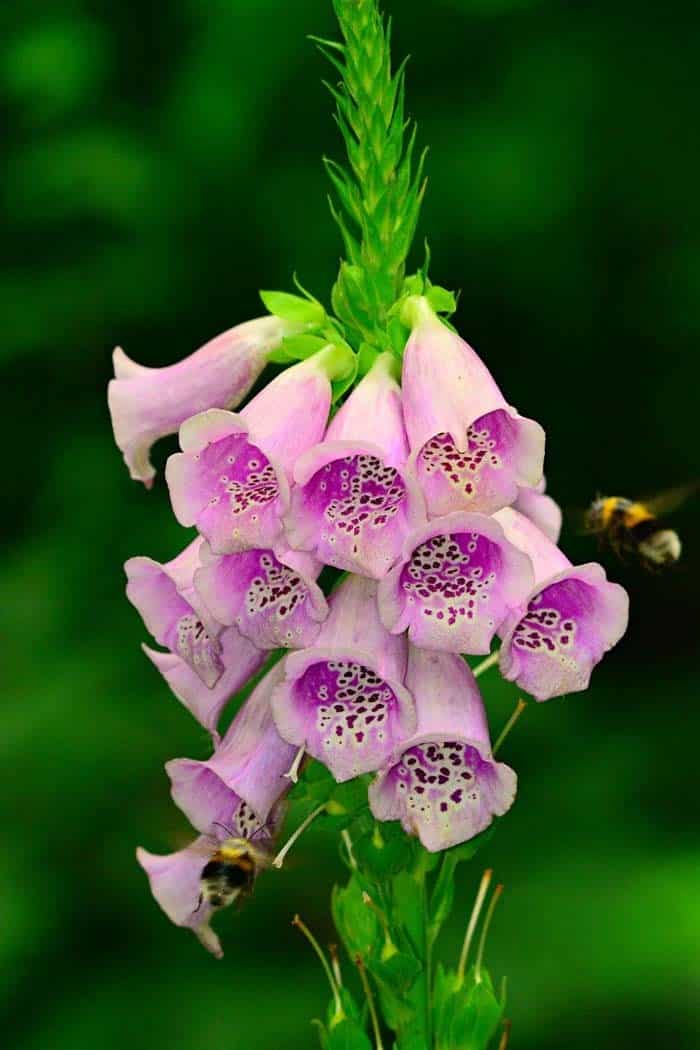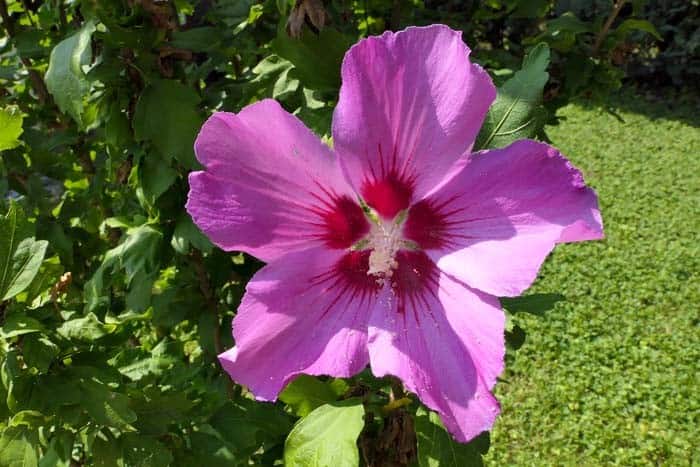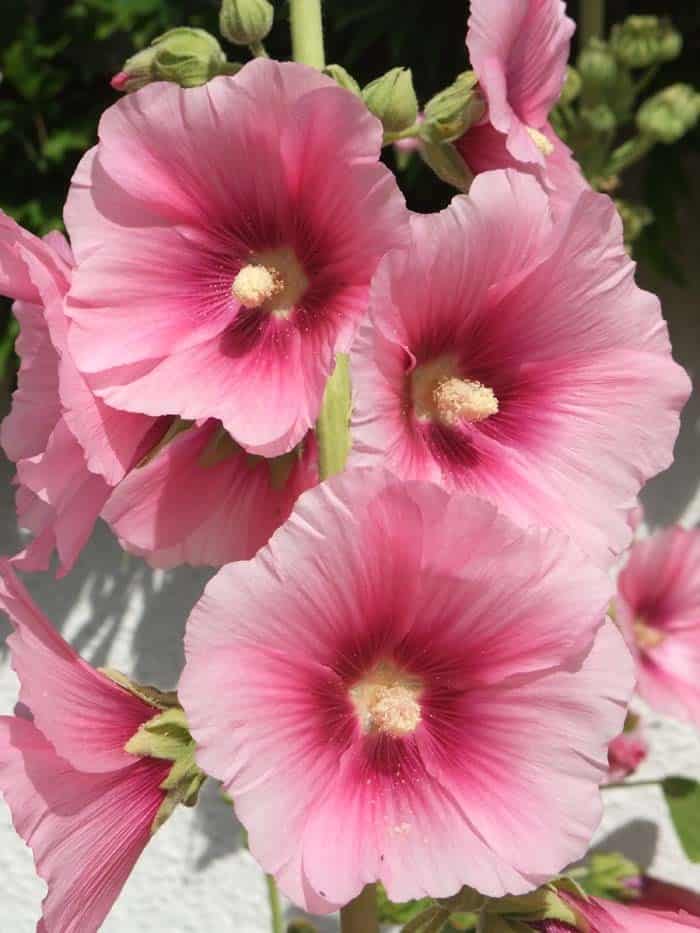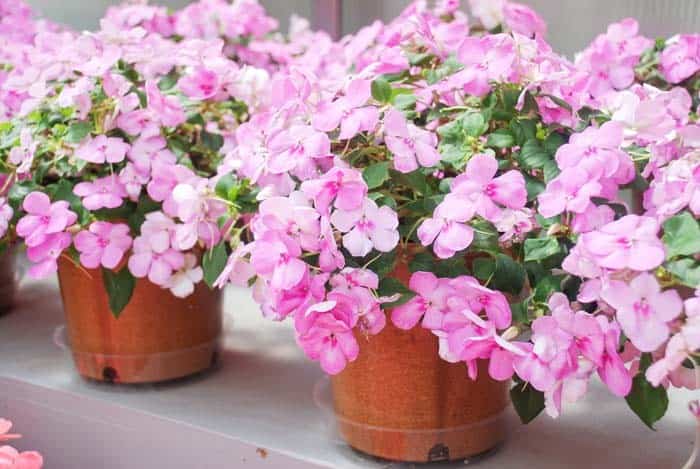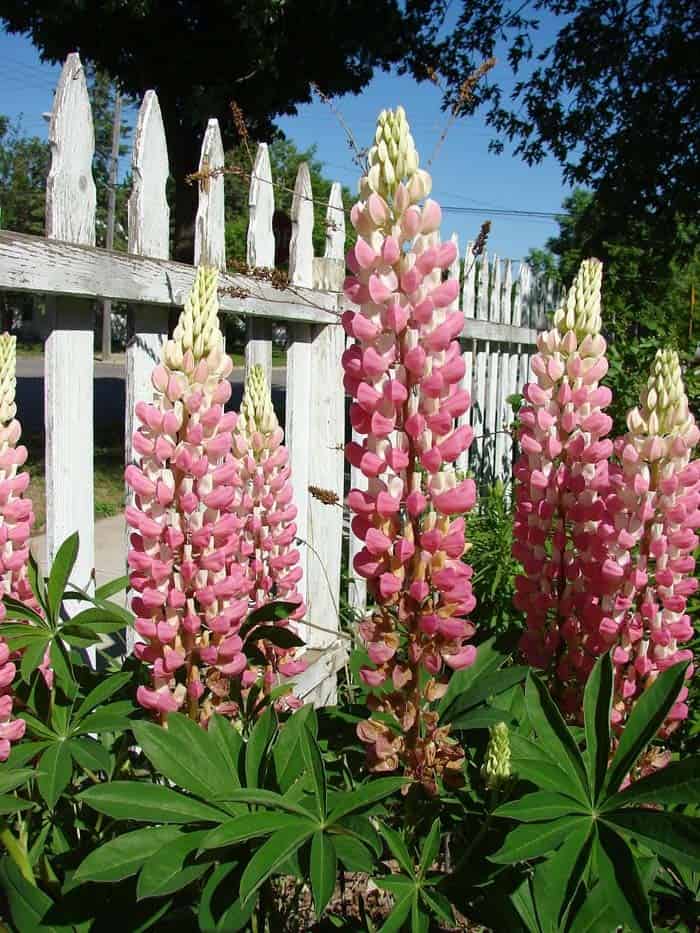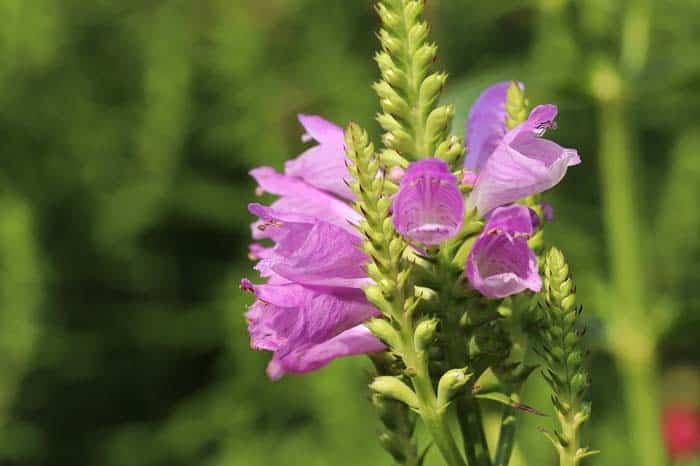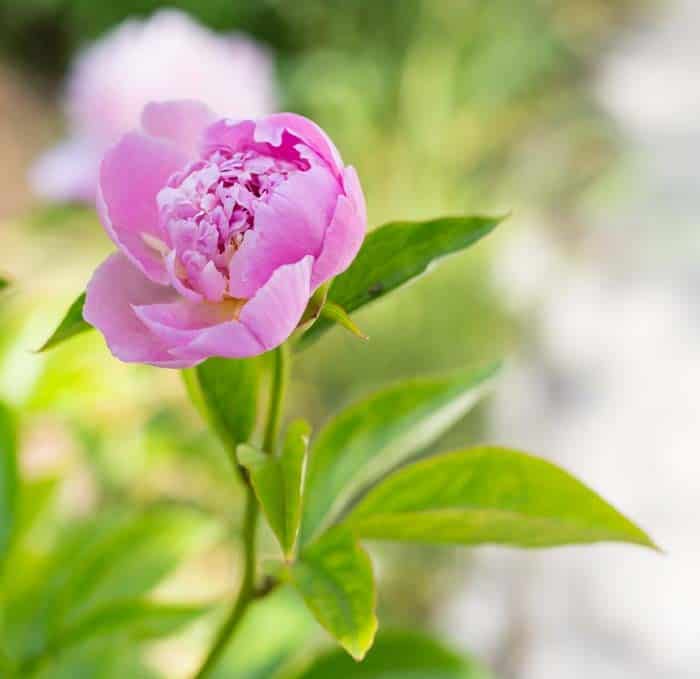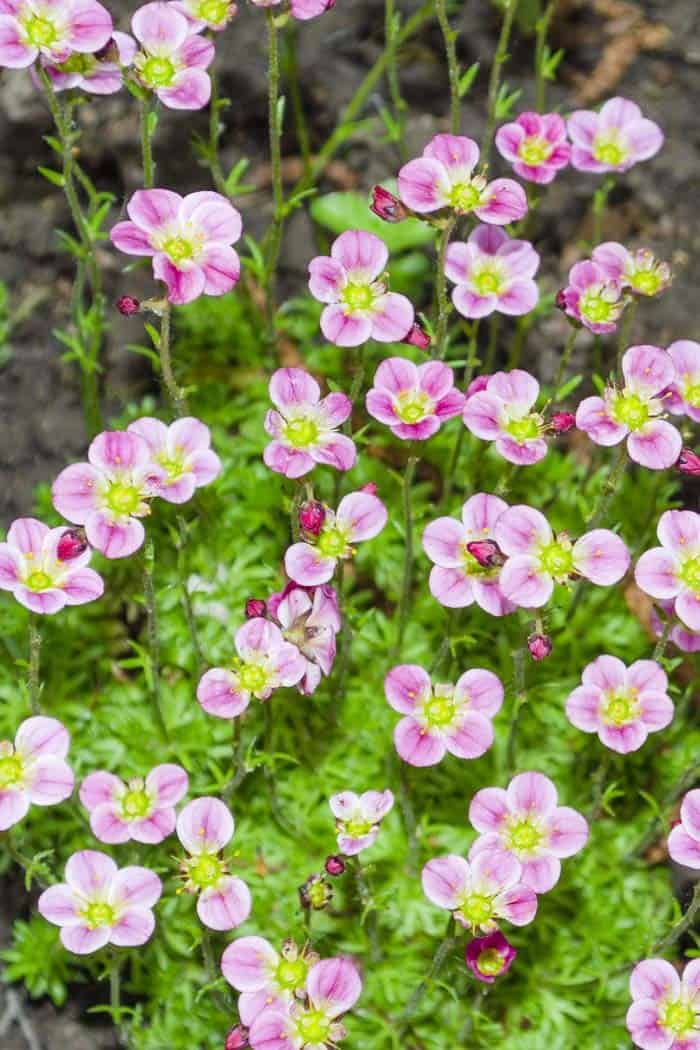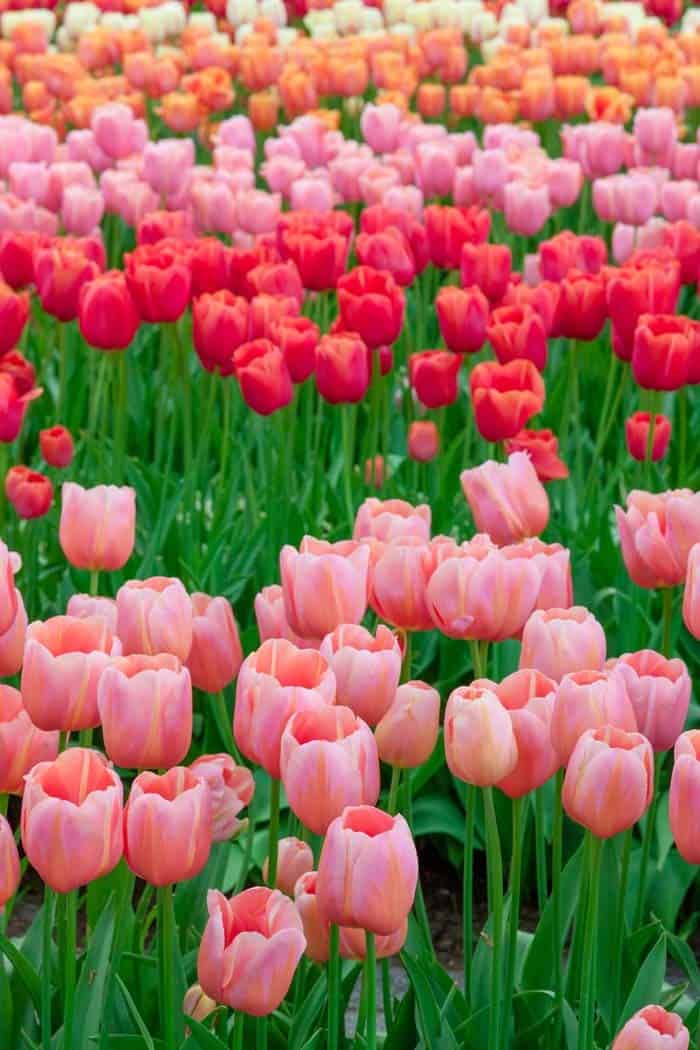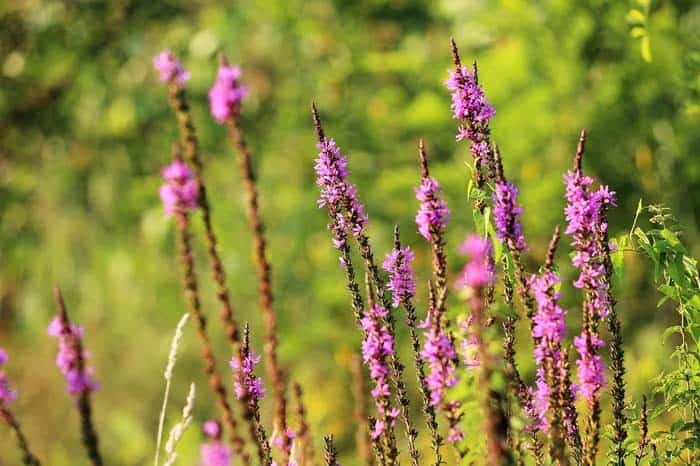Perennial flowers are a staple in many gardens, as they signal the arrival of warmer weather and vibrant colors. Their beauty lies not only in their varied hues, textures, and heights but also in their low-maintenance requirements. Among the most enchanting varieties are those with a soft pink hue, reminiscent of dreams and tranquility. These delicate blooms come in shades ranging from pale pastel to deep cyclamen, adding an air of whimsy to any garden landscape.
A comprehensive collection of 30+ pink perennials serves as a treasure trove for creatives, inspiring the design of breathtaking backyard oases that transport you to a world of magic.
Achimenes
Achimenes, often referred to as the magical flower, boasts stunning beauty that captivates many. This enchanting perennial is characterized by its delicate blossoms, which adorn dark green foliage during the summer months. Its versatility allows it to thrive in both indoor and outdoor environments, producing thick foliage when grown in pots.
Achimenes are well-suited for USDA Growing Zones 10 to 11, and they showcase a vibrant color palette that includes white, pink, blue, or purple hues.
To replicate the ideal growing conditions, provide part shade and plant it in dry to medium-moisture, well-drained soil.
Amarcrinum
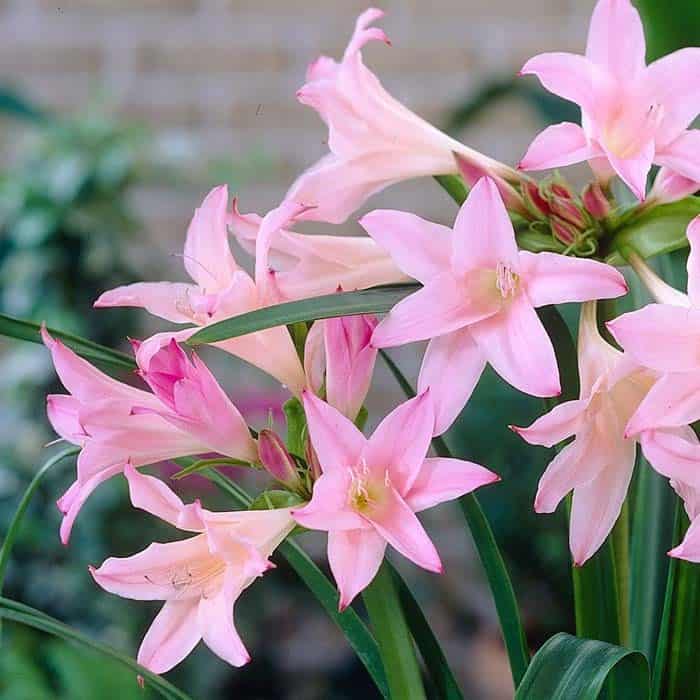
This captivating flower not only showcases its natural beauty but also fills the air with a sweet fragrance during its blooming period. While typically found in full bloom during summer months, some regions experiencing milder temperatures can enjoy the pink blooms from spring to autumn. Reaching nearly 60 cm in height, this flower thrives in containers or directly in the ground.
To ensure survival through a harsh winter, it’s essential to protect the bulbs by maintaining a minimum temperature of 10 °C. This lovely plant is well-suited for USDA Growing Zones 8-10 and requires full sun to partial shade, with a soil preference for dry to medium moisture and proper drainage. Whether cultivated in pots or directly in the ground, this flower’s charm is undeniable.
Anemone
Anemone thrives in areas with well-drained soil and a spot that receives either full sun or partial shade. A nutrient-rich soil is also essential for its growth. This versatile flower can be grown successfully in both gardens and containers. One of the standout features of Anemone is its ability to create beautiful, continuous blooming lines in garden beds. When combined with other flowering plants, it can also be used to create striking landscaping patterns.
To make the most of this flower’s potential, consider planting it in a spot that receives full sun to partial shade. When it comes to watering, Anemone requires regular moisture, especially when it’s in bloom. However, as the blooms begin to fade, it’s essential to reduce the frequency and amount of watering until it’s time to bring the bulbs indoors for the winter season.
In terms of growing conditions, Anemone is hardy in USDA zones 4 to 8 and prefers soil that is fertile, consistently moist, and well-draining. The color palette of this flower ranges from pinkish-white to rose, making it a popular choice among gardeners. With proper care and attention, Anemone can be a stunning addition to any outdoor space.
Snapdragon ( Antirrhinum ) “Pretty in Pink”
The Antirrhinum’s snapdragon-like blooms have earned it a charming nickname. Whether displayed proudly in pots or incorporated into garden borders and arrangements, this versatile plant has won over many hearts. Its ideal setting is one that receives direct sunlight for most of the day, but partial shade can also be accommodating. A consistent supply of moderate water is also essential for its healthy growth. With these conditions met, the Antirrhinum thrives in USDA growing zones 7 to 11.
The plant’s vibrant colors come in a range of shades including white, yellow, pink, red, orange, peach, and purple. While full sun can be beneficial, it also tolerates part shade, making it a great option for gardeners seeking versatility. As for its soil requirements, the Antirrhinum prefers rich, moist, and well-draining conditions.
Aster (Aster Spp.)
The Aster, a perennial native to Europe, is renowned for its star-shaped blooms that burst forth in mid-summer. These vibrant flowers come in a range of colors, including white, pink, lilac, and blue, often forming beautiful bouquets. What’s more, the Aster requires minimal upkeep, thriving in moderately drained soil as long as it receives regular watering. Every two years, pruning the stems before they bloom allows the plant to develop optimally.
This low-maintenance beauty can be grown in USDA zones 3 to 8 and prefers full sun exposure with medium-moisture, well-drained soil.
Astilbe (Astilbe spp.)
The Astilbe is a stunning pink flower that offers numerous benefits for gardeners. One of its most notable advantages is its ability to bloom for an extended period, producing tufty blossoms that add texture and visual interest to any setting. Additionally, this flower thrives in partial shade, making it an ideal choice for areas with limited sunlight. Its resistance to high soil moisture also means it can tolerate a range of watering conditions.
When in full bloom, the Astilbe produces long sheaves of pink flowers that are sure to captivate attention from June to September. With its impressive height and showy blooms, this flower is sure to be a standout in any garden or arrangement. For optimal growth, the USDA recommends planting the Astilbe in zones 4 to 8. The flower’s beauty is also reflected in its color variation, which ranges from pure white to vibrant pink and rich purple.
As for sunlight, the Astilbe prefers full sun to partial shade, while its soil needs are straightforward: dry to medium-moisture, well-drained soil.
Bergenia
The Bergenia is a charming perennial flower that thrives from late April to early July. Its adaptability is one of its most impressive features – it can flourish in a range of conditions, including partial sun and unfertilized soil. However, with some TLC, you can coax it into blooming again in August or September. This hardy flower excels in both cooler and warmer climates, as long as watering is tailored to the ambient temperature.
When it comes to growing conditions, Bergenia falls squarely within USDA zones 4 to 8, preferring moist, rich loam or clay soil with part shade to full shade.
Campions
Rose campion, also known as Lychnis coronaria, has been a timeless favorite in cottage gardens. Its vibrant blooms now come in shades of magenta, white, and bright pink. When planted in a spot with full sun, this plant will reward you with an abundance of colorful flowers. While it can tolerate partial shade, the number of blooms may be fewer under these conditions. The leaves of rose campion are covered in fine hairs, creating a soft, fuzzy backdrop for its showy pink flowers.
This flower thrives in USDA Growing Zones 4-8 and prefers medium-moisture, well-drained soil. Interestingly, it also has good tolerance for dry soil, which brings out the best foliage color.
Chrysanthemum (Chrysanthemum morifolium)
Chrysanthemums are a popular choice for gardeners due to their ease of care and vibrant blooms. These flowers thrive in both soil and containers, offering a range of colors including orange, yellow, white, bronze, lavender, pink, and bicolor combinations that can add a pop of color to any landscape. To promote healthy growth and maximize blooming potential, chrysanthemums require rich, well-drained soil and full sun exposure in the spring.
In fact, with proper conditions, these flowers are known to produce many long-lasting blooms. For gardeners in USDA zones 5 through 9, growing chrysanthemums is a great option. With their adaptable nature and low maintenance requirements, they’re an excellent addition to any garden or outdoor space.
Coral Bells (Heuchera Sanguinea)
Looking for a statement piece in your garden arrangement? The Coral bells are an excellent choice. Their vibrant pink spikes of blooms will catch the eye and create visual interest. What’s more, these evergreen plants thrive in woodland settings, making filtered sun or shade no barrier to their development.
Notable characteristics include USDA Growing Zones 4 to 8, with colors ranging from pink and coral red flowers to green, bronze, or yellow foliage.
When it comes to sun exposure, Coral bells prefer full sun to part shade, as heavy sun can wash out the leaf color. For optimal growth, they require rich, moist, well-drained soil with a neutral to slightly acidic pH.
Creeping Phlox ( Phlox Stolonifera )
The creeping phlox is a popular choice among gardeners for its ability to create a lush, natural carpet of small pink to violet blooms. This versatile variety can be used to edge a garden bed or fence, as well as in rock gardens where it thrives in well-drained soil. With the ability to resist sun to partial shade when regularly watered, this low-maintenance plant is perfect for butterfly enthusiasts and those who want a beautiful display of color year-round.
The compact tufts of leaves remain green throughout the seasons, while the vibrant blossoms bloom in spring and attract butterflies to your garden. This hardy perennial can be grown in USDA zones 5-9 and prefers soil with medium moisture, humus, and good drainage. With its stunning color varieties, including violet and purple, it’s no wonder this plant is a favorite among gardeners.
Dahlias (Dahlia)
The Dahlia has a rich history, with a legend suggesting it was admired by a Spanish conqueror. Its lengthy blooming period, spanning from May to October, can be ensured by planting it in areas with indirect sunlight. The globe-shaped blooms come in a vibrant array of colors, including orange, pink, white, red, and yellow.
The unique petal arrangement around the stamen resembles perfectly arranged funnels that roll out into rows.
With over 20 years of recorded breeding, Dahlias have developed an impressive range of color varieties, excluding true blue, black, or green hues. The patterns can be solid, bi-colored, or tri-colored.
USDA Growing Zones: 8 to 11; Color Varieties: Every color except true blue, true black, or green; Color Pattern: Solid, Bi-colored, Tri-colored; Sun Exposure: Partial sun in zone 8 (Full sun in colder zones); Soil Needs: Well-drained and evenly moist; Fertilize with organic flower food with a low nitrogen ratio
Delphinium (Delphinium spp.)
The Delphinium is a perennial that thrives in the warmth of summer. Its show-stopping blooms are characterized by vibrant spike-like flowers that burst forth from lush green foliage, boasting a kaleidoscope of colors including pink and blue hues. This sought-after plant has earned its place as a staple in cottage gardens, where it’s cherished for its ability to create a picturesque landscape.
When used as the focal point of a flower arrangement, Delphinium’s statuesque stems add an unparalleled depth to any display, creating a captivating visual effect. For optimal growth, Delphinium requires USDA Growing Zones 3-7, and can be grown in full sun. The ideal soil conditions include fertility, well-draining moisture, and evenness of moisture levels.
Forget-Me-Not
This captivating perennial produces stunning displays of five-petaled blue or pink blooms. While it thrives in humid environments, its roots require well-draining soil for optimal growth. The flower’s prolific blooming period spans from May to October, allowing it to flourish even in shadier areas, much like its wildflower relatives. With a hardiness range spanning USDA Growing Zones 3 to 8, this charming bloom can be enjoyed in various regions.
Its color palette is characterized by vibrant blues and soft pinks. The ideal growing conditions include full sun to partial shade, as well as fertile soil that is evenly moist and well-drained.
Foxglove (Digitalis purpurea)
The towering foxglove perennial can reach a staggering height of up to two meters. As one of the tallest pink flowers in our collection, it also doubles as a herb, boasting lush green foliage covered with pappi that is utilized in the creation of heart disease remedies. However, it’s essential to exercise caution when planting this flower, as it is toxic and should be kept out of reach from children and pets.
When it comes to attracting pollinators, the foxglove’s bell-shaped blooms are a major draw for bees and butterflies, which congregate in clusters around its striking flowers.
For optimal growing conditions, foxgloves thrive in USDA zones 4-8, where they can bask in full sun to partial shade. They require medium moisture levels and part shade to truly flourish.
Strawberries ( Fragaria )
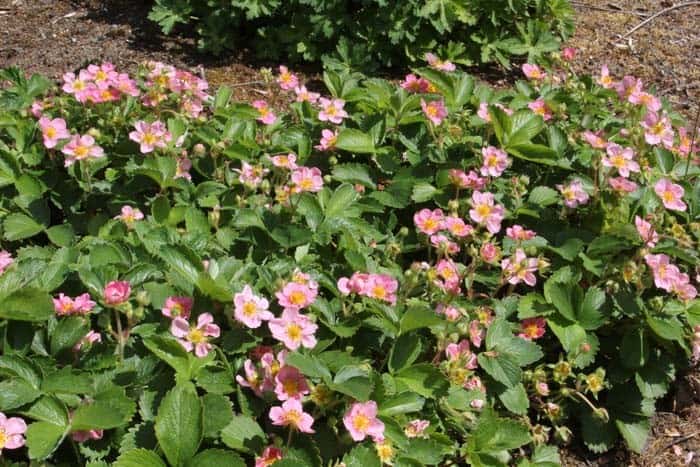
This butterfly feeder, also known as a wooden species, is renowned for its delectable fruits. As you await their formation, you can appreciate the dainty pink petal flowers featuring striking yellow stamens at their center. The delicate arrangement of these blossoms creates an enchanting display that’s sure to captivate.
Unlike cultivated strawberries, the wild variety produces smaller and fewer fruits, yet the pale pink blooms paired with lush green foliage create a captivating wild bouquet, reminiscent of a charming forest glade.
Hardy Geranium
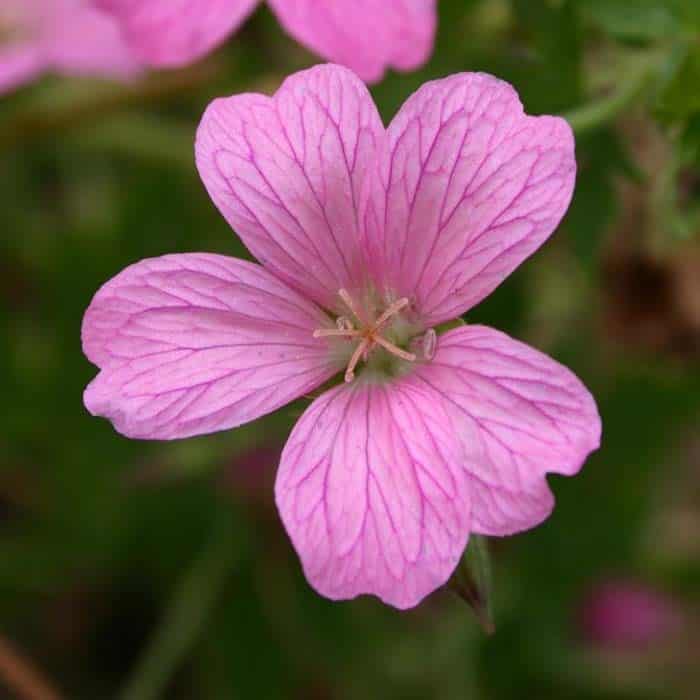
The Hardy Geranium is a perennial that thrives in well-drained soils with moderate moisture levels. Its vibrant blooms emerge during the summer months, providing a striking contrast against its lush green foliage. To maintain this plant’s health, it’s essential to keep its roots cool and consistently moist.
This perennial can be grown in USDA zones 3-9, and its stunning color varieties include blue, pink, purple, and white hues.
While some Hardy Geraniums can tolerate full sun, others prefer partial shade, depending on the specific variety. Additionally, this plant requires medium-moisture, well-drained soil to flourish.
Hardy Hibiscus
The Hibiscus family boasts an impressive array of varieties, yet one characteristic unites them all: their stature. As the largest perennials in many gardens, these shrubs can grow tall and produce showy blooms that measure up to 12 inches across in diameter. A key requirement for optimal growth is full sun exposure – even direct sunlight is preferred over partial shade. To ensure a vibrant display during the blooming phase, regular watering is crucial.
Hibiscus plants thrive in USDA Growing Zones 4-9 and exhibit a range of colors including white, red, pink, and blue. In terms of soil preferences, loamy conditions are ideal for these flowering wonders.
Hollyhocks (Alcea rosea)
The lovely ornamental flower in question is renowned for its ease of cultivation from seeds. Its blooms come in a delightful range of colors, including soft whites, delicate pinks, vibrant reds, and even subtle blacks. A perennial plant by nature, this beauty thrives globally due to its adaptability to various climates and soils. Once established, it has the remarkable ability to self-seed year after year.
Notably, the large, funnel-shaped blooms attract a diverse array of pollinators, such as bees and butterflies. This plant’s impressive characteristics make it an excellent choice for many gardeners. It is suitable for USDA Growing Zones 4 to 10, where it will flourish in full sun and well-drained soil enriched with humus.
Hyssop
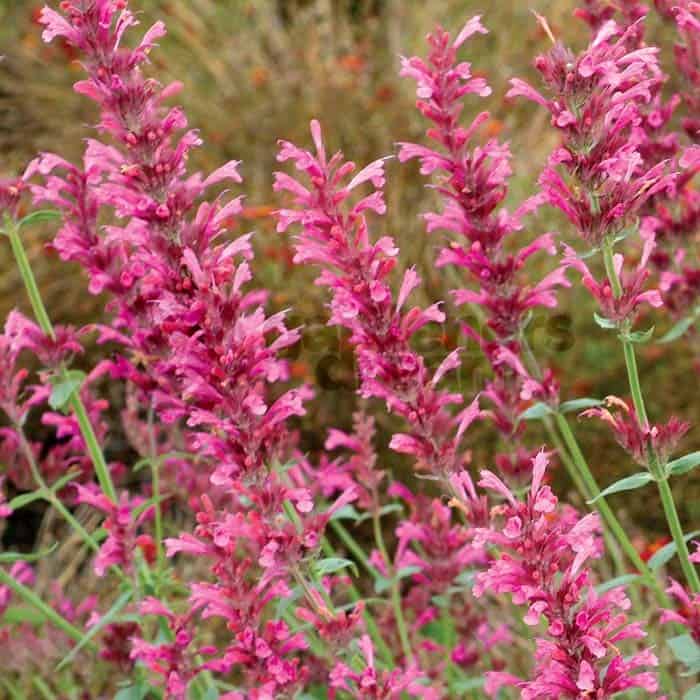
Agastache, also known as Hyssop, is a plant with a rich history that dates back to ancient times. This perennial shrub grows tall and produces striking pink spikes, releasing a sweet aroma reminiscent of anise. A resilient plant, Agastache thrives in environments where others might struggle, tolerating dry spells and soils high in chalk or sand. It blooms best when basking in the warmth of full sun, although it can also tolerate partial shade.
Gardeners with USDA Growing Zones 4 to 9 will find this plant a suitable addition to their garden, as will those who appreciate its vibrant colors, which include pink, purple, and orange hues.
Impatiens (Impatiens walleriana)
Impatiens are a popular choice for gardeners in warmer climates, where they thrive as perennials. However, when the temperature drops, these lovely flowers need protection from frost. A simple solution is to pot them up and bring them indoors before the first frosts hit. In terms of care, Impatiens are relatively low-maintenance. They’re incredibly adaptable and can flourish in a range of ambient conditions, boasting delicate and vibrant blooms that are sure to delight.
While they can survive in partial shade, their flowering will be more prolific if they receive plenty of sunlight. With proper care, Impatiens can be coaxed into producing an abundance of colorful blooms. In terms of watering, it’s essential to keep the soil consistently moist, as a dry top layer is a clear indication that the plants are thirsty. If you’re growing Impatiens in containers, be sure to reduce watering during the winter months to prevent overwatering.
As for their growing requirements, Impatiens typically thrive in USDA zones 10-11 and can be grown as annuals in cooler climates. The range of color varieties is impressive, with options including pink, rose, red, lilac, purple, orange, and white. In terms of light, Impatiens prefer partial shade to full shade, while the soil should be rich, moist, and well-drained.
Jacob’s Ladder
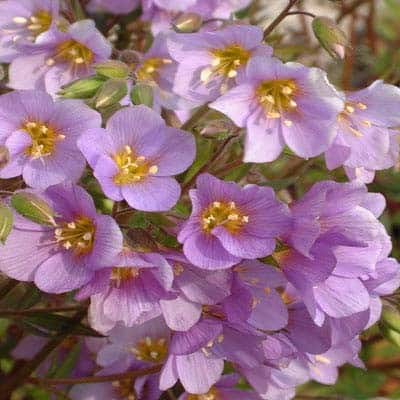
The Jacob’s ladder (a woodland perennial) thrives in shady to semi-shady conditions. Its unique name originates from the resemblance between its leaf arrangement and a ladder. The delicate blooms typically feature a range of blues, although some cultivated varieties showcase soft pink petals. While this flower can tolerate drought, it prefers cooler temperatures. Growing Jacob’s ladder is relatively straightforward as long as you provide an environment that meets its needs.
With proper care, you can enjoy the beauty of this perennial in USDA zones 3 to 8. The colors range from predominantly blue and purple hues to white, pink, and yellow varieties available through cultivation. This plant excels in part shade to full shade conditions and rich, well-drained soil.
Lily-of-the-Valley (Convallaria Majalis)
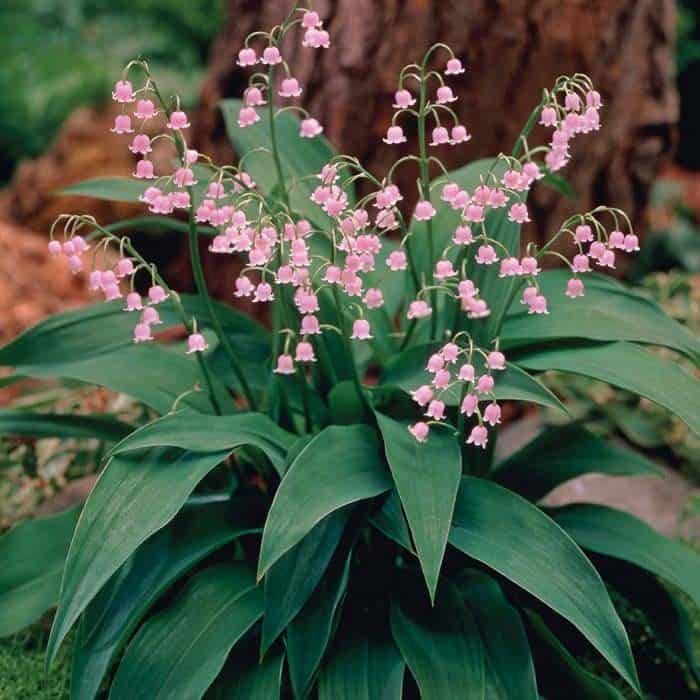
Lily of the Valley’s charm lies in its delicate, bell-shaped flowers that exude a sweet fragrance amidst large, dark green leaves. This versatile plant thrives in self-sufficient environments, rapidly spreading to create a lush, verdant garden filled with springtime blossoms. Its symbolism of purity and sweetness has made it a popular choice for wedding bouquets.
When planting your first Lily of the Valley flowers, opt for a spot that receives full to partial shade and boasts damp, rich soil.
With USDA Growing Zones ranging from 3 to 8, this plant is adaptable to various climates. Its color varieties include pure white and light pink hues, while it requires part shade to full shade for optimal growth. For best results, ensure the soil is well-draining, rich, and moist.
Lupine (Lupinus × Hybrida)
The lupine’s remarkable height is largely due to the robust stems that support its vibrant blooms. These flowers are a kaleidoscope of colors, ranging from white and red to pink, yellow, blue, and purple, arranged in a striking spike-like formation that can reach up to three feet tall. In the summer months, the pink hues take center stage, adding a pop of color to any landscape.
A low-maintenance option for challenging environments with poor soil quality, lupines thrive in conditions where others may struggle. For optimal growth, they require rich, medium-moisture soil and can tolerate slightly acidic conditions. In USDA zones 4 to 8, these hardy plants can receive full sun to partial shade.
Lychnis Coronaria “Gardeners World”
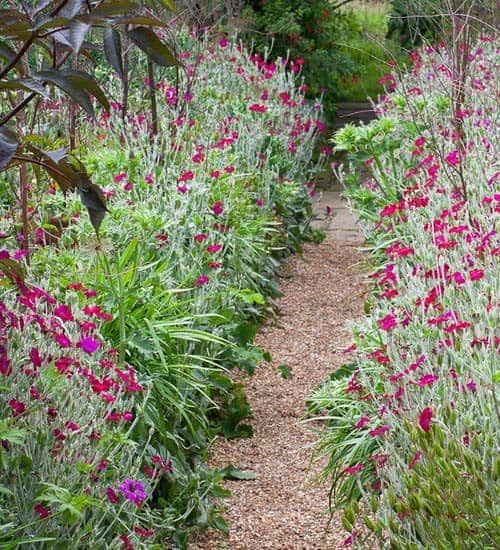
A perennial favorite, this flower boasts showy rose-colored blooms that thrive in full sunlight. Its leaves are uniquely silver-coated, providing a stunning contrast to the delicate petals. The blooming period spans from spring to late summer, with a special trick to coax double magenta blooms out of this beauty.
If you’re looking to grow your own, know that it’s suitable for USDA zones 4-8.
You can expect a range of rose-magenta hues, and the plant requires full sun to reach its full potential. As an added bonus, it can tolerate dry soil, which actually enhances the foliage color.
via Sarah Raven
Obedient Plant
The Obedient plant, also referred to as the false dragonhead due to its resemblance to cultivated snapdragons, thrives in full sun. This optimal condition fosters an abundance of blooms and healthy growth. While it can tolerate partial shade, especially during summers with prolonged dry spells, the ideal environment is characterized by moist soil and a slightly acidic pH. Despite being drought-tolerant, the plant benefits from regular watering – once or twice a week should suffice.
With suitable conditions, the Obedient plant flourishes in USDA Growing Zones 3 to 10, showcasing its versatility. The variety of colors on display ranges from pure white to soft pink and lovely lavender hues. When it comes to sun exposure, this plant prefers full sun, while well-drained soil is essential for optimal growth.
Oriental Lilies
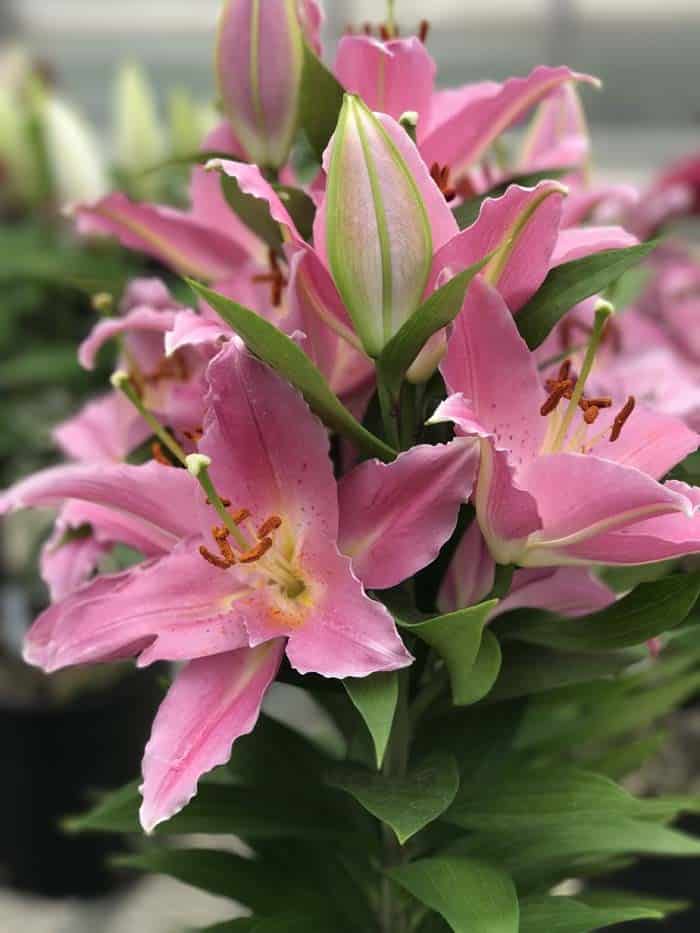
Peonies (Peonia spp.)
The Peony’s breathtaking blooms are a sight to behold – large, delicate, aromatic, and truly exquisite. While they thrive in warm temperatures, it’s essential to note that they’re sensitive to extreme heat. Ideally, they’ll develop best in conditions offering full sun to partial shade. It’s bittersweet having these beauties in your garden, as their fleeting blooms will only be on display for a mere 10 days before they fade away.
To create a picturesque peony haven, consider cultivating various cultivars that can extend the blooming period and ensure you can fully appreciate these stunning flowers. For optimal growth, Peonies require USDA Growing Zones 3 to 8, and can tolerate average, well-draining soil. A range of colors is also available, including white, pink, red, purple, and bi-colors – making this a versatile addition to any garden.
Prunella
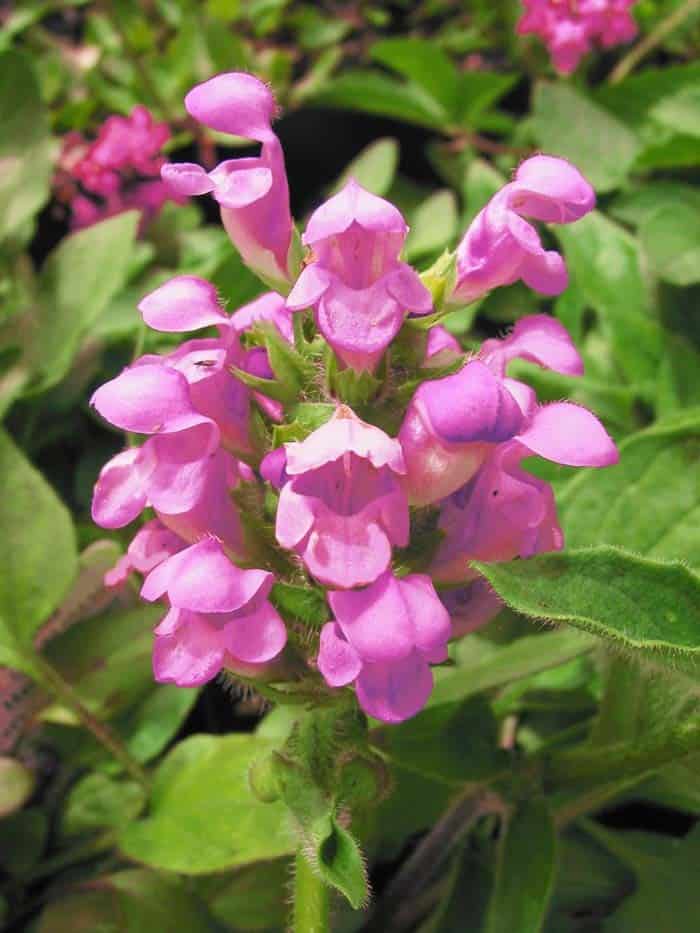
Prunella thrives in conditions ranging from full sun to partial shade and an array of soil types. As a rapid-growing, evergreen ground cover flower, it excels in its ability to persist throughout the year. Its leaves retain a consistent mat green hue throughout all seasons, while its blooms evoke pink spires adorned with hooded flowers that burst forth from early spring to late autumn.
This adaptable perennial is suitable for USDA Growing Zones 5 and can be enjoyed in various shades of pink, purple, and blue. Prunella prefers well-drained soil and partial shade to full sun, making it an excellent choice for gardeners seeking a low-maintenance yet visually striking addition to their outdoor spaces.
Rodgersia (Rodgersia Pinnata)
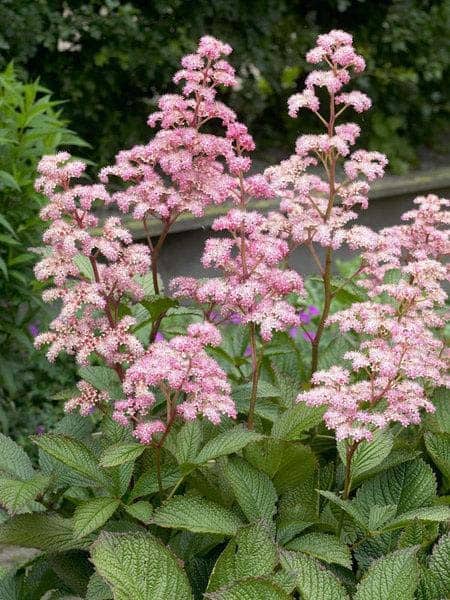
For optimal growth, Rodgersia thrives in locations that receive full sun to partial shade. The soil should be rich and nutrient-dense, with good drainage to prevent waterlogged conditions. Regular watering is also crucial. As the leaves mature, their initial bronze-green hue gradually darkens. The plant’s striking feature, however, are its late-summer blooms – delicate spikes of fluffy pink petals.
Its medium height makes it a suitable companion for evergreen shrubs or ferns, adding visual interest to any garden. Rodgersia is adaptable to USDA zones 5 to 7 and prefers full sun to partial shade, rich soil that retains moisture but drains well.
Saxifrage
This perennial plant boasts an abundance of tiny, yet numerous leaves that form a lush green tuft. Its striking pink flowers are the true showstopper, making it a popular choice for gardeners. When planted in combination with other cascading blooms, it adds a delightful pop of color to garden beds, edging gardens or rock gardens. With its adaptability and low-maintenance requirements, this plant thrives in nearly all USDA growing zones.
Its preferences include full sun to partial shade, moist yet well-drained soil, and a spot that’s perfect for showcasing its vibrant pink hue.
Tulips
Tulips are a quintessential spring flower that unfortunately don’t last for more than a few days each season. Despite their brief blooming period, these vibrant flowers deserve a special place in the garden due to their stunning color variety. While pink tulips are the most popular cut flower option, they’re not the only species worth admiring. With over 150 different types, tulips come in a range of colors including white, yellow, pink, red, purple, and bicolors.
In terms of growing conditions, tulips thrive in USDA zones 4 to 6, with some hardy varieties able to survive in zones 7 and 8. They require full sun to part shade and medium moisture with well-drained soil.
Veronica Spicata “Red Fox”
The Red fox is an ideal choice for edging or front-of-border gardens due to its compact, bushy growth habit. This perennial produces a profusion of vibrant blue, pink, or white flowers in early summer, which remain in bloom until late summer. To encourage continued blooming and allow new flowers to emerge, remove spent blooms to make way for fresh growth. To thrive, the Red fox requires a sunny location with well-drained soil that is kept consistently moist but not waterlogged.
By providing these conditions, you can enjoy this stunning perennial’s beauty from spring to fall.
Yarrow (Achillea millefolium)
The Yarrow flower is distinguished by its low-maintenance requirements, thanks to its bushy and heat-resistant nature. Throughout the summer months, it produces stunning pink clusters that remain vibrant for an extended period. As they mature, the flowers gradually transition from their original pink hue to a soft, creamy shade – a fascinating trait that sets this plant apart. The Yarrow also boasts a pleasant aroma, further enhancing its charm.
To cultivate this resilient flower, simply plant it in a location with full sun and well-draining soil. Its ability to thrive under these conditions means you don’t need to worry about frequent watering – the Yarrow is naturally draught-resistant. With proper care, it will continue to bloom and delight your senses throughout the growing season. Notably, the USDA Growing Zones for this plant range from 3 to 10, depending on the specific cultivar.
Additionally, the Yarrow flower comes in a variety of colors, including pastel shades, rust tones, deep red hues, yellow, and white. When it comes to sun exposure, the Yarrow requires full sun, while its soil needs are relatively straightforward – any well-draining soil will suffice.
